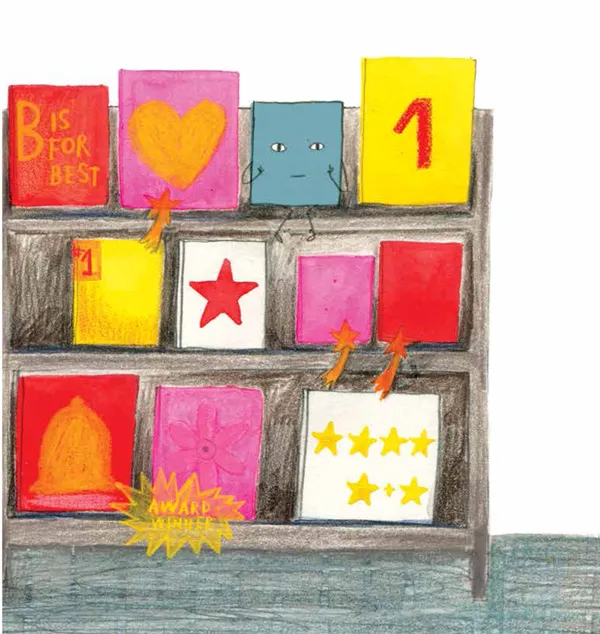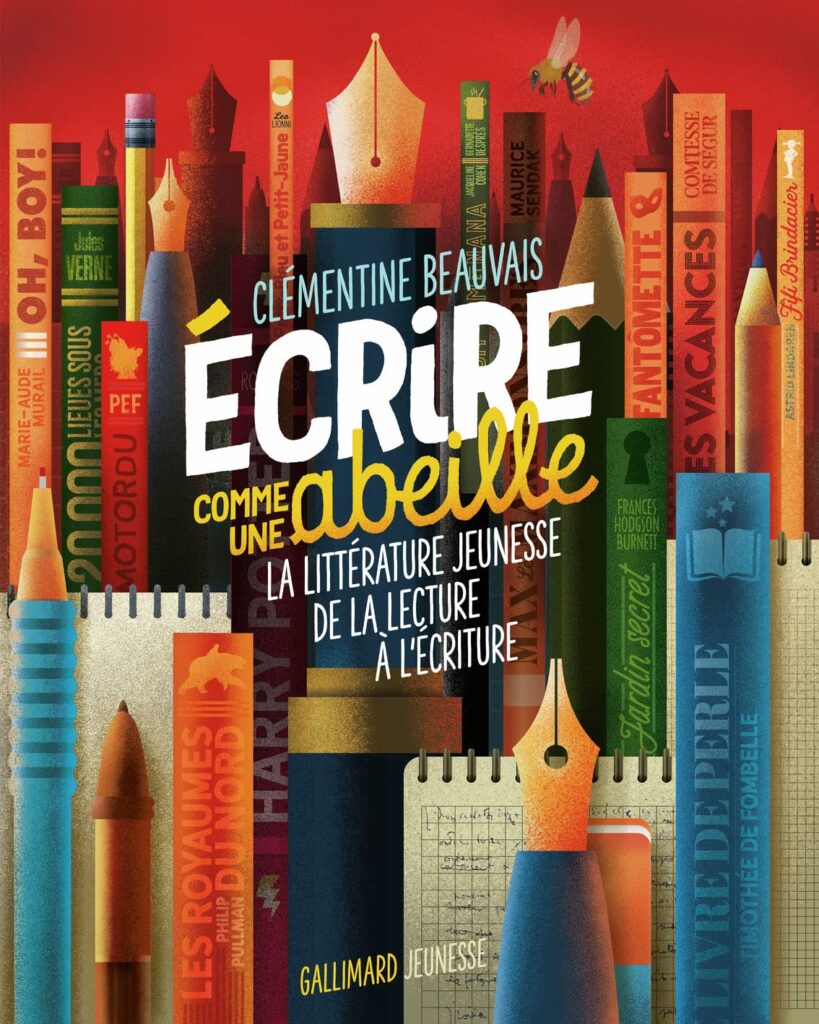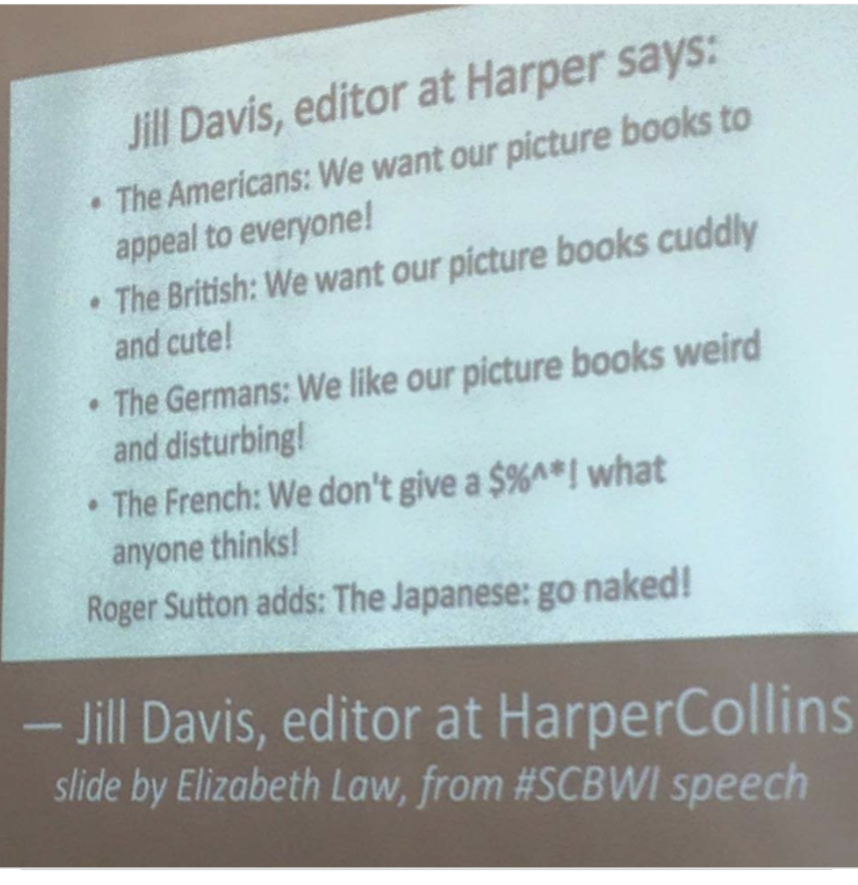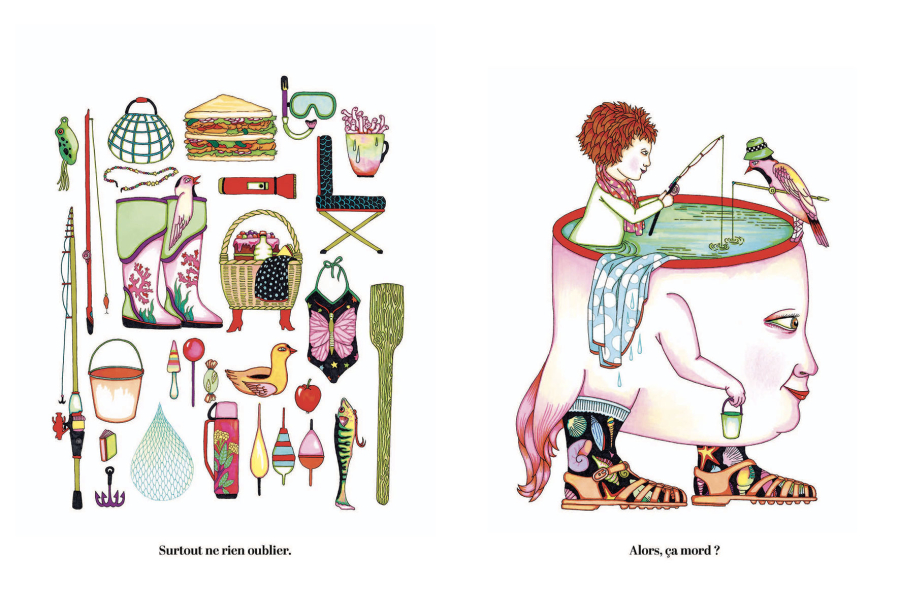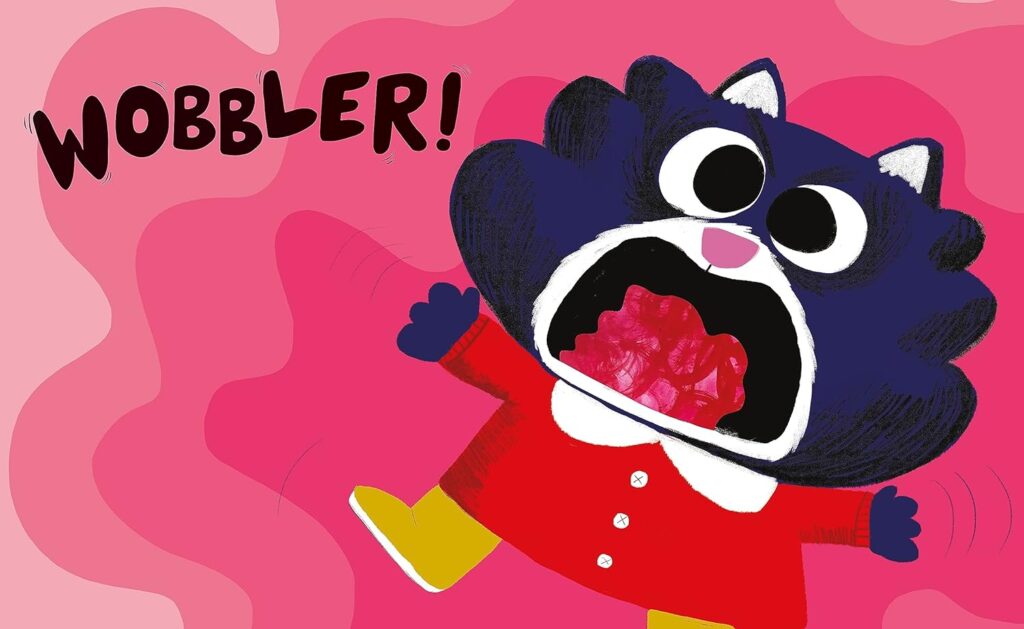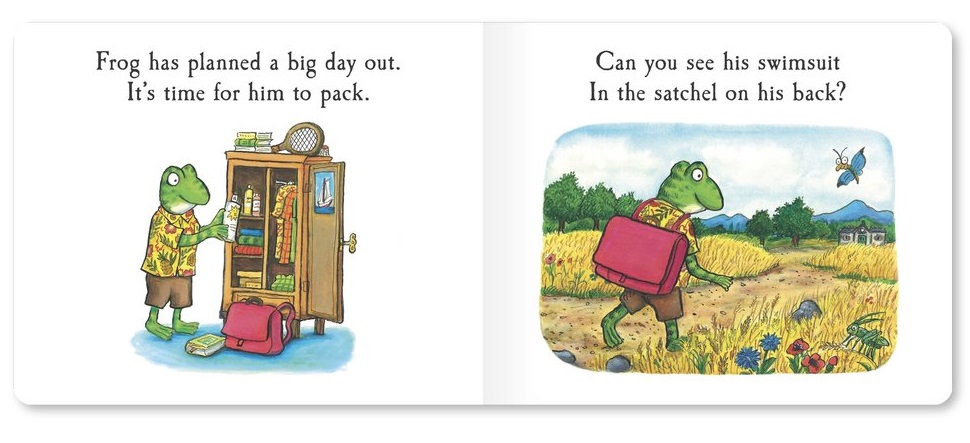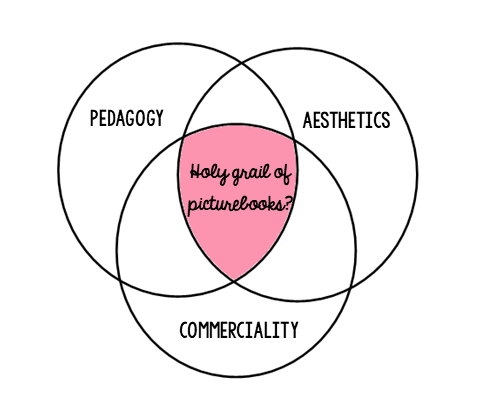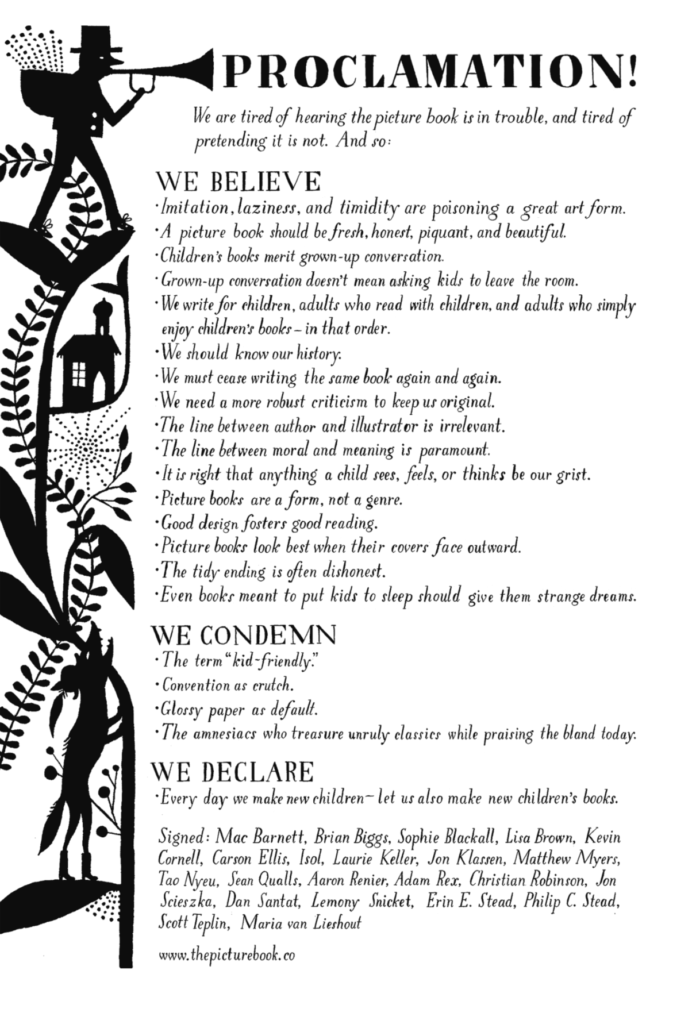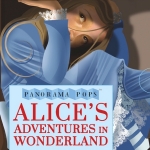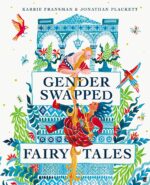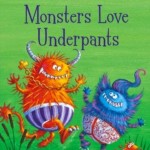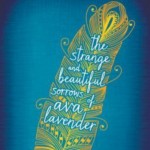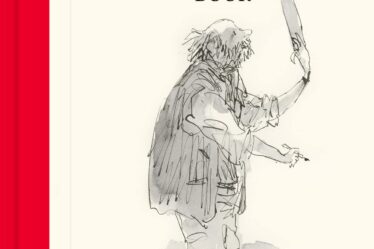Picturebooks. I love them, and I assume you love them too or you wouldn’t be here. People love them for different reasons: because they have young children, because they are teachers or librarians, because they appreciate them as an Art form. I sometimes find it tricky to define my own interest in picturebooks: not quite academic, not necessarily pedagogical, appreciative but with a lack of Art education . The ultimate objective for me is always to find a “good” picturebook, but what does that mean? Is a “good” picturebook one that shows artistic and text-image prowess and ingenuity, or or one that is popular with its targeted audience? The latter is more complicated and is analyzed by Janet Manley in the much shared article on Jon Klassen’s The Skull in Literary Hub from a few months ago:
“Picture books must hitch a ride on the parent if a child is to get a look-in so the children’s publicity machine is tilted fully at the adults” .
The opening sentence of the article offers an astute summary of the complicated commercial dynamics of picturebook industry. Book-buying power in the children’s sector is mostly not held by the intended reader, and even more so with picturebooks; the adult (whoever they might be in relation to the child) holds the purse strings. This impacts, from the onset, on how we value picturebooks. But the buyer is only one of several gatekeepers that stand between the book and the child reader.
In Écrire comme un abeille: la littérature jeunesse de la lecture à l’écriture (Gallimard Jeunesse), Clémentine Beauvais describes that there are three requisites of children’s literature – aesthetics, pedagogy, and commerciality (74). While this is not a put forward as a framework for analyzing whether a picturebook is “good”, it is interesting to look at it in this context.
Aesthetics
This is the quality of the book, in its creation but also its production. In the case of a picturebook, this will be reliant on many aspects – the quality of text and artwork and how they work together, the quality of production and attention to detail (for example, if a hardback, what might there be under the dust jacket?). Beauvais also broaches the potential for “worthiness”: worthy of newspaper coverage (excruciatingly rare in the UK, despite counting for a fifth of the market) or specialist publications (Books for Keeps, Inis, Bookbird ), worthy of being on award shortlists (whether they are commercial, such as the Waterstones Children’s Book Prize, or more illustration focused such the Carnegie Medal for Illustration ,previously Greenaway Medal, the Klaus Flugge Prize, or the Illustration for Children shortlist from the V&A Illustration Awards ), or worthy to become a “modern classic”. These are difficult criteria to pin down; they are at the whim of time, trends, and also geography. Ideas of what makes suitable picturebook Art and how such things as every day scenes are portrayed will vary from country to country and some might not “travel” well, and that is before we even consider themes. I have always loved this slide by Jill Davis (who is now Editorial Director at Hippo Park and publishes, amongst others, books by Beatrice Alemagna), which was shared on The Niblings’ Facebook page back in 2016:
A good example of this I always find is Swiss illustrator Emmanuelle Houdart, whose work is highly recognizable and who creates picturebooks for all ages.
Despite her success in Europe, it is hard to see how her work would “fit” in the British publishing landscape.
Pedagogy
While not talking about overtly didactic picturebooks (though there are some books that specifically talk about issues as a form of bibliotherapy, as mentioned by Beauvais) , children’s literature does have a role to play in children learning about the world. Most picturebooks do this covertly, whether it’s dealing with loss (The Heart and the Bottle by Oliver Jeffers), or understanding one’s emotions (Barbara Throws a Wobbler by Nadia Shireen), there is almost always something pedological about picturebooks. But this idea that picturebooks have a pedological element (even if, as Beauvais insists, this does not necessarily affects its aesthetics) does impact which books make their ways to readers.
Book-buying adults might be specifically looking for a book to deal with an issue in a child’s life for example, or might want to expose them to specific social and political ideas (or indeed avoid them). Take for example the wonderful allegory of Brexit that is The Little Island by Smriti Prasadam-Halls and Robert Starling (Andersen Press), a favourite of mine, unsurprisngly!

A potential issue (linked to commerciality, about which there is more below) is when this pedagogical imperative becomes what drives editorial choices, which seems to have crept up in the UK. In the last few years, it feels like some publishing choices in the market that covers primary age has definitively been shaped by what is being taught in schools. This could be explained by the fact that they have a ready customer base with schools and the vast networks of teachers on social media might potentially increase exposure. This may explain to an extent why we end of with so many books on similar themes (a point also highlighted in the Literary Hub article).
Commerciality
Publishing is not a philanthropist endeavour, and books need to sell. This is particularly true in the context of the UK publishing industry, specifically with the lack of Net Book Agreement, but also because the government historically has not been a big supporter of the industry (unlike Canada for example, with its Canada Book Fund). As a result, the UK book industry is more risk averse, because they need to make a financial return on sales, and this, in turn, impacts the type of picturebook that gets published. This is also amplified by the aforementioned lack of newspaper coverage mentioned above. These factors go some way towards explaining why more “unorthodox” picturebooks don’t get published as widely in the UK, particularly for younger audiences, and this links directly to some of the points mentioned in the Literary Hub article. If and when they do get published, they are often published by independent publishers and are more likely to be stocked in independent bookshops, impacting access (as it will take the adult to actively seek out books to come across them) . Whereas, the commercial valeurs sûres will be easily accessible in the supermarket, picked up on whim while looking for a bag of flour. According to The Bookseller, the top selling picture book in the UK in the week of 14th May was:
The rest of the Top 20 looks like this:
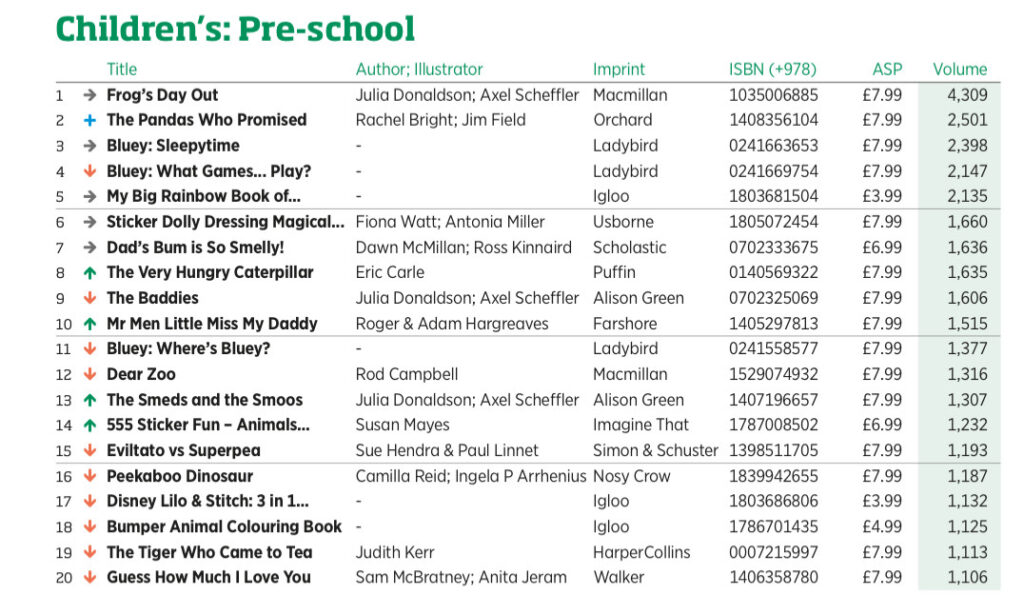
If you regularly visit supermarkets, this Top 20 will not surprise you. It’s interesting to look at volume as well. If the big sellers shift those kind of numbers, imagine what sale numbers might be like for other, less mainstream picturebooks.
While those three requisites are parameters rather than constraints according to Beauvais (77), , when looking at this chart, the difficulties that ensue from finding making sure that picturebooks are commercially viable and that in fact, the books that would offer an alchemy of all three are pretty rare indeed.
Jon Klassen could be considered to have achieved that Holy Grail (his sales are in the several millions). But that’s not how it works for lots of brilliantly talented picturebook makers, especially in this country. Commercial success does not necessarily equals quality.
So what else can help us formulate what a “good” picturebook is? How about the Picture Book Proclamation? It was written by Mac Barnett and co-signed by a group of illustrious North American picturebook makers back in 2011 (you can also find it here). The design, lettering and illustration is by Carson Ellis.
A lot of the Proclamation touches on things that have already been covered here: the adult reader should not be considered the primary target, the need for more conversation around the picturebook, meaning over morals, the lack of variety in themes, the “timidity” of British picturebook publishing. While they are not technically criteria, I like the Proclamation because it helps me focus on what I see as a “good” picturebook. So I am not sure I have an answer really, but I know we need to keep the conversation going about picturebooks, and we need to shine the light on those that merit it the most and most probably get it least.
And if you’d like to discover more good picturebooks, I urge you to visit Shelf Editions; you won’t find a more expertly and lovingly curated selection of picturebooks anywhere else.

